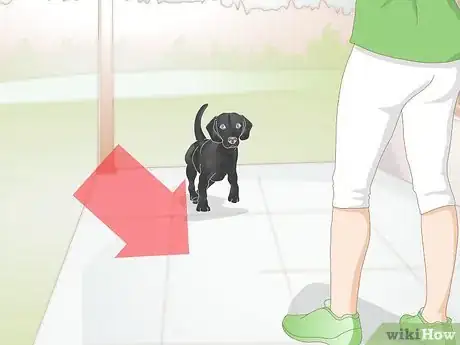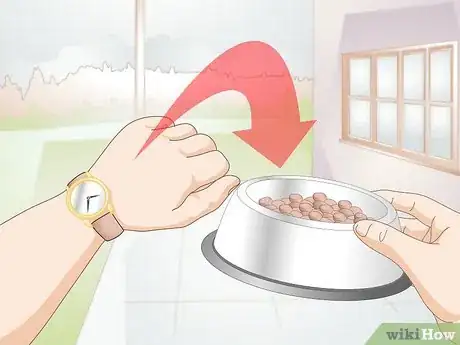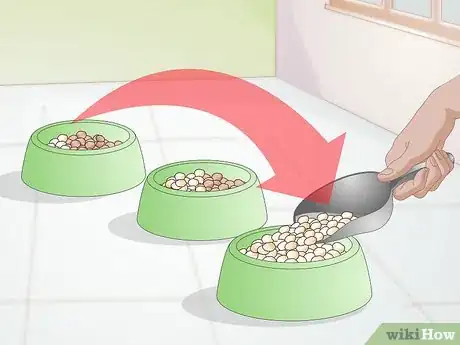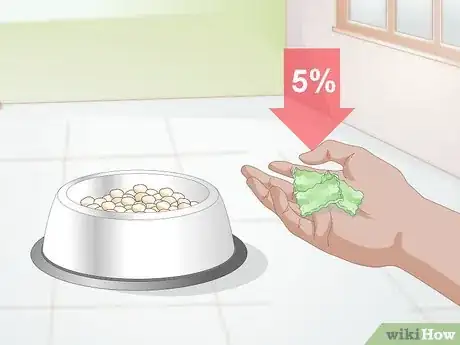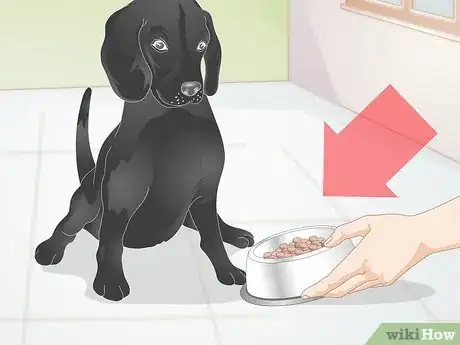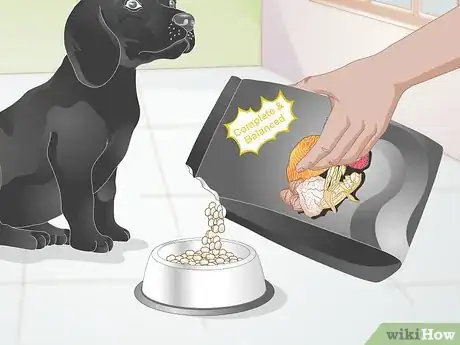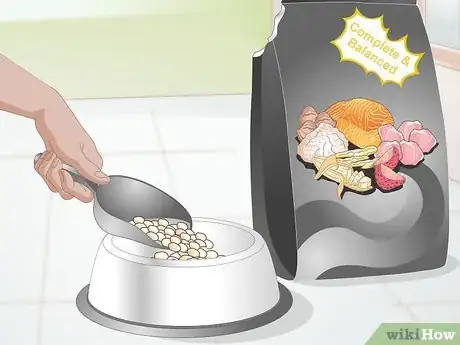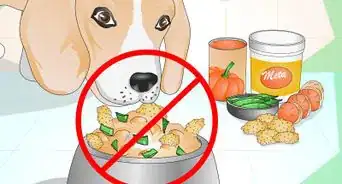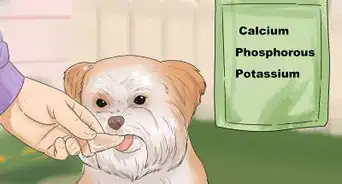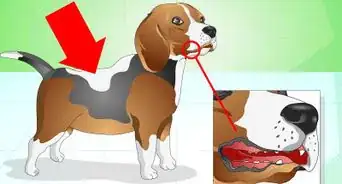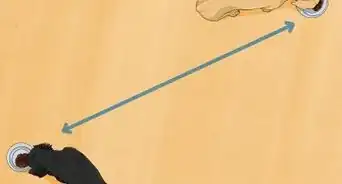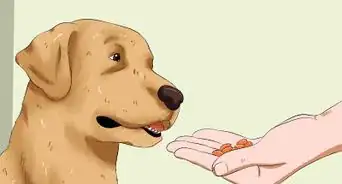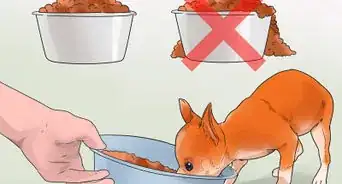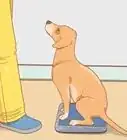This article was co-authored by Brian Bourquin, DVM. Brian Bourquin, better known as “Dr. B” to his clients, is a Veterinarian and the Owner of Boston Veterinary Clinic, a pet health care and veterinary clinic with three locations, South End/Bay Village, the Seaport, and Brookline, Massachusetts. Boston Veterinary Clinic specializes in primary veterinary care, including wellness and preventative care, sick and emergency care, soft-tissue surgery, dentistry. The clinic also provides specialty services in behavior, nutrition, and alternative pain management therapies using acupuncture, and therapeutic laser treatments. Boston Veterinary Clinic is an AAHA (American Animal Hospital Association) accredited hospital and Boston’s first Fear Free Certified Clinic. Brian has over 19 years of veterinary experience and earned his Doctor of Veterinary Medicine from Cornell University.
There are 9 references cited in this article, which can be found at the bottom of the page.
This article has been viewed 49,699 times.
Establishing a regular feeding routine is important to your canine companion’s health and mental well-being. Meal times are not only a daily opportunity to reinforce and extend your dog’s training; they’re also a chance for your dog to see you as a provider, rather than a servant. Take a little time to understand canine nutrition, set up a feeding procedure, and make any necessary adjustments. Your happy, obedient, and thriving pet will reward you for your efforts!
Steps
Setting a Time and Place
-
1Feed your dog in the same place each day. This will make your dog feel safe and secure. Pick a spot that's easy to clean, like a kitchen floor or plastic mat in the corner of the room. Make sure that it's away from your dining table.
- If your dog is new to you, consider starting by feeding them out of your hand so that they will directly recognize you as the provider of food.[1]
-
2Set designated feeding times for your dog. It’s best not to let your dog “graze” by leaving food out for them to eat whenever they like. Having a set routine will help their metabolism since it will adjust to their feeding schedule. It will also help to establish your dog's expectations and trust in you if they can count on you providing food at the same time each day.[2]
- How often you should feed your dog will depend on its age and nutritional requirements along with your schedule. Puppies can feed up to four times a day. Senior dogs who have lower activity levels and smaller portion sizes can be fed once a day.
- If possible, most adult dogs should be fed twice a day, once in the morning and once in the evening. Spreading out their mealtimes into two equal portions separated by 8-12 hours helps full-grown canines properly digest their food and control their hunger.
- To curb separation anxiety, avoid feeding your dog immediately upon your return. When they associate your appearance with the instant gratification of a meal, they will be more likely to be anxious about your return.
- To curb the risks of indigestion and the dangerous stomach condition “bloat,” avoid feeding your dog immediately after or before you exercise them.[3]
Advertisement -
3Limit the duration of their mealtimes. Only give your dog access to their food for a set amount of time, so that they’ll learn to eat it as soon as it’s offered and not be picky about their food. Remove their bowl as soon as 15 or 20 minutes has elapsed, regardless of how much food is left in the dish.[4]
- Doing so will help establish you as the provider and controller of food, which puts you in charge of your pet instead of vice versa. It will also help streamline other elements of their routine, like going out to do their business since you can let them out about a half hour after each mealtime.
Adjusting Your Dog’s Routine
-
1Adjust your dog’s food intake as necessary. Keep in mind that serving-size recommendations are based on averages. You will need to monitor your dog’s weight and activity level to be sure that the suggested portion and caloric intake is appropriate for their needs.
- Make serving-size adjustments as necessary to maintain your dog’s ideal weight. If they’re gaining additional pounds, slowly decrease their daily portion. If they’re losing weight, gradually increase their serving.
- Remember that you may also need to alter the quantity that you feed your dog in relation to changes in their environment (such as winter weather), age, health, or activity level.
-
2Phase in any changes gradually. If you would like or need to switch any elements of your dog’s feeding routine, such as the amount of food or type of food, do so gradually. This will help their metabolism and digestive track adjust smoothly to the shifts.[5]
- For instance, if you would like to start your dog on a new food, start by mixing it in with your dog’s old food. Slowly increase the proportion of the new food over the space of a week before serving it on its own.
- It’s not necessary to change your dog’s food for the sake of variety. They are well pleased to eat the same food each day, so only make a change if their well-being or phase of life requires it. If your dog is thriving on a particular food (that is, they have good energy and body condition, a shiny coat and healthy digestive track), stick with it.
-
3Factor treats into your dog’s feedings. It’s wonderful to reward your dog, but it’s best to limit treats to only about 5% of their overall food intake. Dog treats are not required to provide complete and balanced canine nutrition, so it’s best if they only make up a small part of your pet’s diet.[6]
- Treats and snacks can provide a bit of controlled variation to your dog’s diet. However, feeding your dog many treats will make them more prone to overeating and less likely to eat their regular meals.
- When you are doing lots of rewards-based training, you may want to temporarily introduce more treats to your dog’s diet. You can give your dog up to 20% treats in a day, but be sure to adjust their overall food intake accordingly. It’s still best to reserve treats for high-level rewards and use kibble (when they’re hungry) as their normal reward.
- Keep in mind that treats can be more filling for smaller dogs. Just two treats could make up half a day's ration of food for a small dog.[7]
Encouraging Good Mealtime Behavior
-
1Have your dog "sit" and wait for their food. Domesticated dogs were bred from predators, and they still like to “work” for their meals. You can use mealtimes as an opportunity to bond with your dog and reinforce essential training by making them sit and wait for your command before they eat. Start by asking them to “sit” while you prepare their food and lower their dish.
- To establish this routine, have your dog sit. Lower their food bowl towards the ground, raising it back up each time they leave the sit position. Each time they allow you to go further towards the ground with the dish before leaving the sit position, reward them with a treat. Work your way gradually towards laying the dish on the ground without them leaving the sit position.[8]
- Over time, your dog will know to sit and wait for their meal without you commanding them to do so.
-
2Make them wait for permission to eat. Once your dog is able to sit and wait for their food dish, the next step is getting them to wait to feed until they are released by you (provider of the food) to eat.
- Once their food dish is on the ground, tell them to “stay” as you stand up. Keep telling them to stay until they have redirected their attention away from the food to you. As soon as they do so, release them to eat with a command phrase such as, “go ahead,” “eat up,” or “chow down.”
- When you’re first establishing this routine, take away their food dish if they go for it without asking for permission. After they learn to look at you and wait for your command, you can continue to increase the time they need to focus on you to hone their impulse control.
- Teaching dogs to wait for their food shows them that demanding or food-aggressive behavior will not be rewarded. It also provides a general lesson in impulse control that can improve their training and good behavior across the board.
-
3Leave your dog alone while they eat. Now that your dog has earned their meal, let them enjoy it in peace. Trying to touch your pooch or their food dish while they’re eating from it can encourage stress, anxiety, and/or aggressive behavior in your pet.[9]
Getting Your Dog’s Nutrition Right
-
1Feed your pet high-quality “complete and balanced” dog food. Dry kibble that explicitly says it offers complete and balanced canine nutrition is best. Choose one that aligns with your dog’s age, weight, and activity level. Ask your vet for the ideal food type for your dog.
- At least 10% of the diet of the average adult dog should be comprised of protein; at least 5.5% should be fats. Carbohydrates can account for up to half of your dog’s caloric intake.[10]
- Wet dog food may be advisable for dogs with certain health conditions, such as urinary tract infections. However, most dogs do just as well or better on dry kibble, which is generally cheaper, more nutritionally dense, and better for canine dental health than canned alternatives.[11]
-
2Limit your dog’s intake to a set amount each day. At mealtimes, serve your dog a controlled portion of a “complete and balanced” dry dog food that reflects their age, weight, and activity level. Consult with your vet about the suggested daily caloric intake for your dog. [12]
- You can also use the guidelines printed on the dog food package as a starting point for determining the appropriate serving size.
- While it may seem easier as a pet owner, free-choice feeding is not recommended. It can easily lead to weight problems for your pet since it’s harder to keep track of how much your dog is consuming when you let them feed “on demand.”
-
3Don’t let your dog beg or feed them scraps. Your dog will be far less motivated to eat their own food if you’re treating them to “human food.” Giving them table scraps can lead to nutritional imbalances and obesity while rewarding them for begging behaviors.[13]
- Human food is often unhealthy and sometimes even poisonous for your dog. Even common, seemingly healthful food like raisins, grapes, onions, or mushrooms can be detrimental to canines; caffeine and chocolate can be lethal.[14]
- Have your dog stay well away from the table in a designated place during your meal times to prevent begging. Feed them after or at least at a different time from you so that they know they have to wait their turn.
References
- ↑ http://pets.webmd.com/ask-pet-health-11/dog-feeding
- ↑ http://www.aspca.org/pet-care/dog-care/dog-nutrition-tips
- ↑ https://www.medicanimal.com/10-FAQs-about-dog-feeding-guidelines/a/ART111512
- ↑ http://www.akc.org/content/health/articles/puppy-feeding-fundamentals/
- ↑ http://pets.webmd.com/ask-pet-health-11/dog-feeding
- ↑ http://pets.webmd.com/dogs/guide/feeding-your-adult-dog-faq?page=4
- ↑ Brian Bourquin, DVM. Veterinarian. Expert Interview. 20 December 2019.
- ↑ http://www.vetstreet.com/teach-your-dog-to-wait-for-the-food-bowl#1_xckmh3nk
- ↑ https://www.medicanimal.com/10-FAQs-about-dog-feeding-guidelines/a/ART111512
- ↑ http://pets.webmd.com/dogs/guide/feeding-your-adult-dog-faq?page=3
- ↑ http://pets.webmd.com/dogs/guide/feeding-your-adult-dog-faq?page=4
- ↑ http://pets.webmd.com/ask-pet-health-11/dog-feeding
- ↑ http://www.akc.org/content/health/articles/puppy-feeding-fundamentals/
- ↑ http://www.mnn.com/family/pets/questions/why-you-shouldnt-feed-your-dog-people-food
- ↑ Brian Bourquin, DVM. Veterinarian. Expert Interview. 20 December 2019.
- ↑ Brian Bourquin, DVM. Veterinarian. Expert Interview. 20 December 2019.
About This Article
To create a feeding routine for your dog, feed it in the same place each day to make it feel safe and secure. Pick a spot that's easy to clean, like a kitchen floor or plastic mat in the corner of the room. Instead of letting your dog graze, feed it at the same times every day. The consistency will help its metabolism and will also help to establish your dog's expectations and trust in you. When you feed your dog, set out its food bowl for a fixed period of time, like 15 or 20 minutes, and then take it away. This will help your dog learn to see you as its provider and put you in charge. For more tips from our Veterinary co-author, like how to encourage good mealtime behavior, keep reading!
